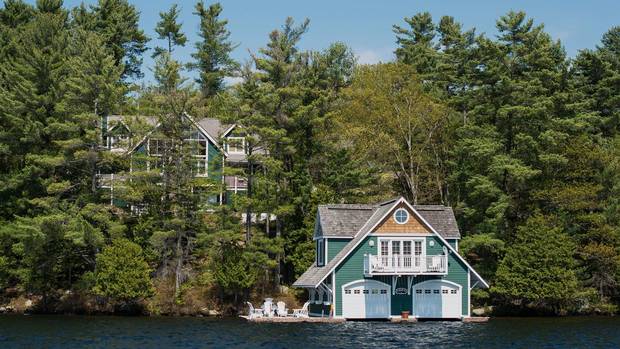Cottage country shows early immunity to GTA real estate cooling
The slowdown in Toronto’s housing market is not reaching cottage country several hours away, where vacation properties are changing hands quickly and prices are still climbing.
Sales data from Royal LePage show Ontario recreational-property prices have climbed to an average of $413,000 in May this year, while prices for lakefront properties in Muskoka grew 20 per cent year over year to $1.5-million from $1.25-million in May, 2016. (Because it has implemented a new methodology for compiling data, Royal LePage does not have a comparable average provincial price for recreational properties in 2016.)
Kevin Somers, chief operating officer of Royal LePage Real Estate Services Ltd., said the vacation-property market around Toronto is “very different” from the market for homes in the city, and he predicts a strong summer of sales in vacation centres even as the Toronto region experiences a slowdown.
“Based on the underlying supply and demand factors, coupled with very lucrative financing, I think we’re going to see a very strong sustained summer market,” he said.
Most cottage-country buyers are typically wealthier and are buying second homes using financing that comes from the strong equity position in their principal homes, so are not spooked by the province’s recent measures to cool the Toronto market, Mr. Somers said.
“They are less impacted, frankly, by the pause or the reprieve that is going on in the GTA market proper right now,” he said.
While most buyers are still seeking vacation homes, he said there is also a growing number of people approaching retirement who are opting to sell valuable city homes and move permanently to a relatively less-expensive vacation market.
Some vacation markets in Muskoka and around the Collingwood area have even started seeing bidding wars, which have been a rare sight in communities hours from the GTA.
“Historically, the process to purchase recreational properties tends to be a more relaxed and extended pace, so it’s a bit of a new anomaly in cottage country,” Mr. Somers said.
Price gains have varied within hot regions, depending on the type and location of the properties.
In the Collingwood region north of Toronto on Georgian Bay, for example, prices for lakefront homes rose 5 per cent in May compared with a year earlier to an average of $801,500, Royal LePage reported. But prices for resort and condominium units remained red-hot over the same period, climbing by 27 per cent to an average of $342,200 as buyers continue to seek more affordable, year-round units that can be used during ski season.
In the Haliburton Highlands area northeast of Toronto, lakefront-home prices climbed 13 per cent in May compared with a year earlier to an average of $425,000, while riverside-home prices were up 20 per cent to an average of $300,000 and island properties climbed 17 per cent to $350,000.
Non-waterfront woodland cabins remain the most affordable option in most centres, averaging $200,000 in Haliburton and $300,000 in the Muskoka region.
Prices for riverside properties in the Muskoka area were also well below prices for lakefront properties, averaging $800,000, while island-based properties averaged $650,000, up 18 per cent over 2016.


